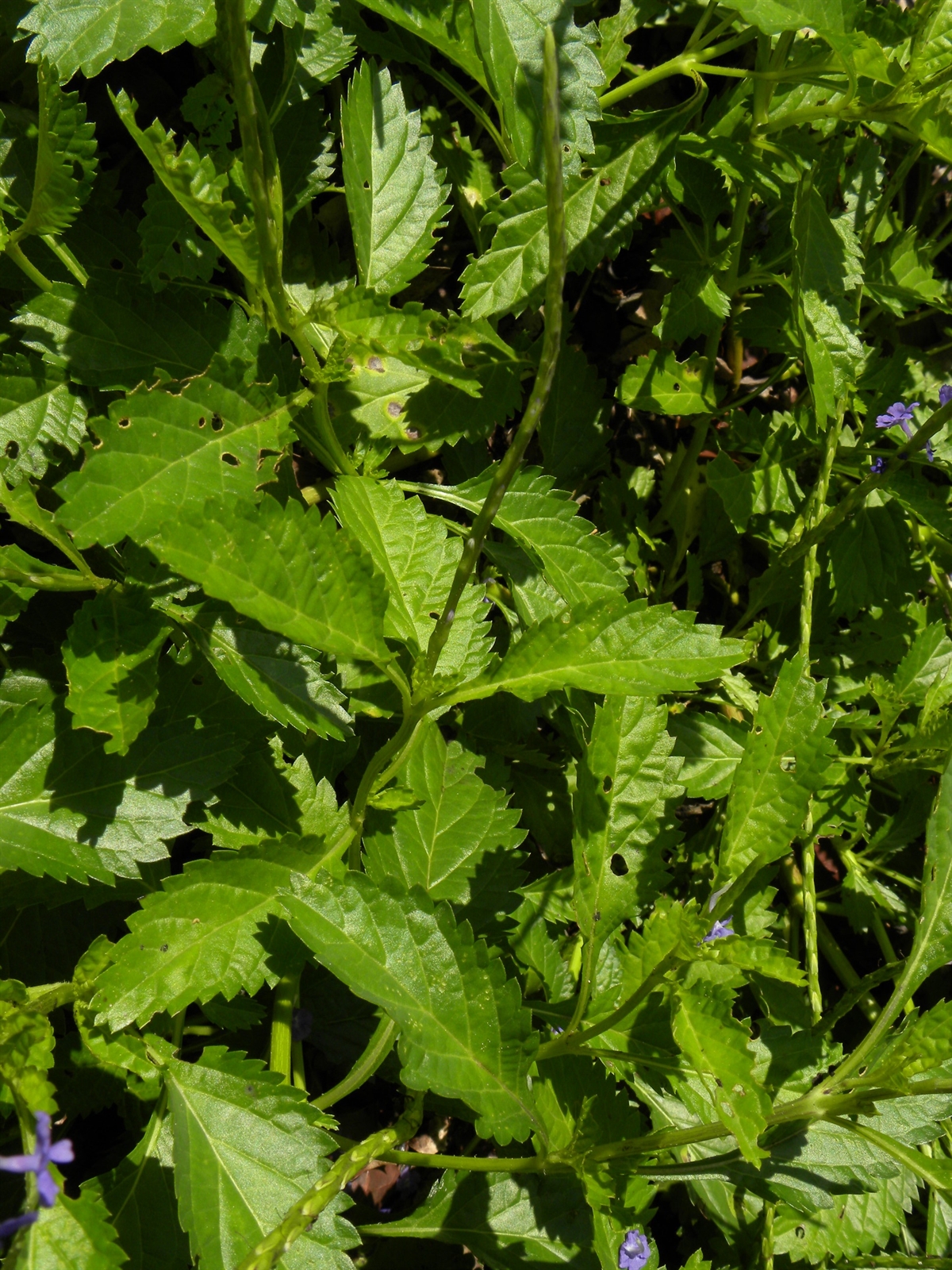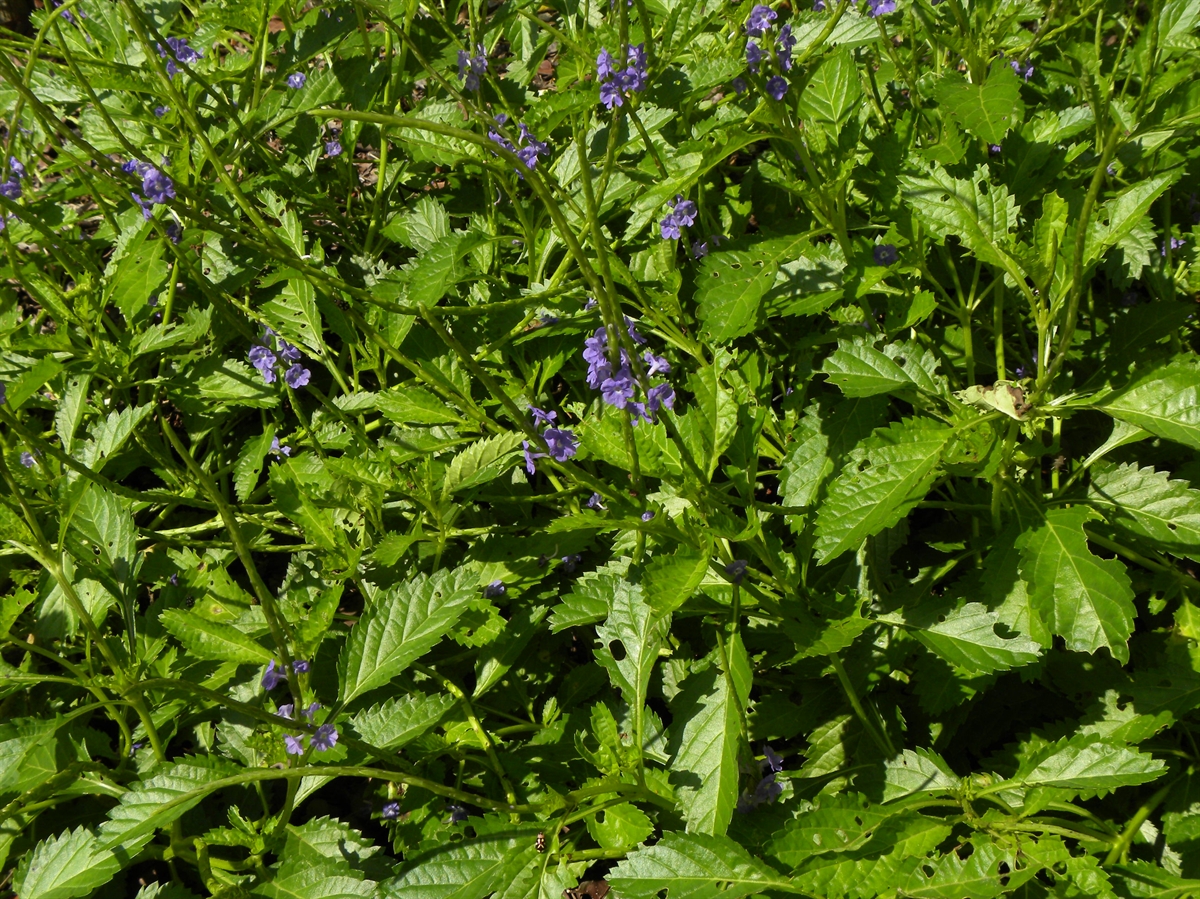Habit: Stachytarpheta jamaicensis grows as a low woody herb up to 1 m in height although typically creeping along the ground. The leaves are arranged oppositely and are up to 7 cm long. The leaves are ovate to elliptic in shape with a crenate/toothed leaf margin. The stems and leaves are covered with small hairs and are typically square in cross section.
The complete, perfect, zygomorphic flowers are arranged in terminal spikes that are up to 50 cm long, usually shorter. The flowers open continuously for months with 2-3 new flowers appearing every few days. The calyx has 5 fused sepals in the calyx. The corolla has 5 fused petals that are a purplish blue that can range from a dark to light coloration. There are 4 stamens fused to the corolla. The ovary is superior with two locules. The fruit is a capsule.
Habitat: Stachytarpheta jamaicensis grows in Human Altered environments, salt flats, ephemeral Fresh Water Wetlands, savannahs, and the edges of Dry Broadleaf Evergreen Formations (coppice).
Distribution: Stachytarpheta jamaicensis grows throughout all the islands of the Lucayan Archipelago as well as the southern United States, the Caribbean, Mexico, Central and South America. It has spread throughout the world in sub tropical and tropical areas.
Medicinal/Cultural/Economic usage: Stachytarpheta jamaicensis is used in the Lucayan Archipelago to treat issues of circulation (high blood pressure), the gastrointestinal tract (worms, constipation), the respiratory system, blisters/boils, chills, and fevers. In the Lesser Antilles it is boiled to treat colds and fevers. In Central America they make a tea out of the leaves and in Africa it has been used to treat Gonorrhea as well as eye and ear sores.
Stachytarpheta jamaicensis is used horticultural industry as a ground cover as well as to attract butterflies and hummingbirds.


